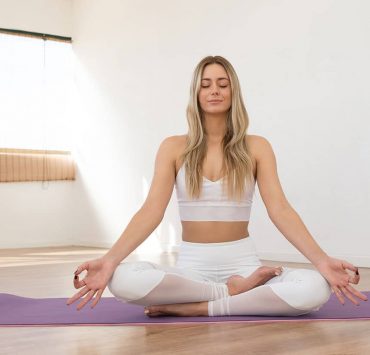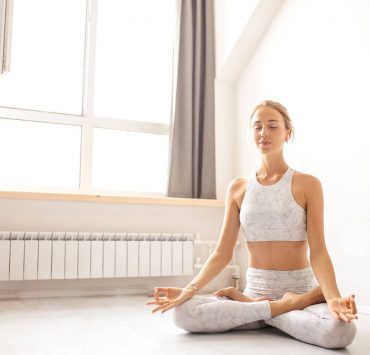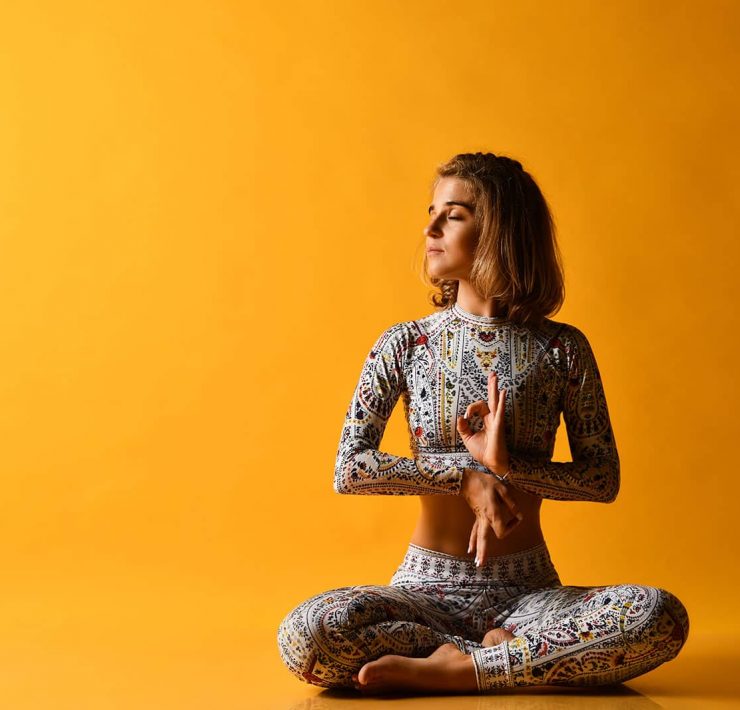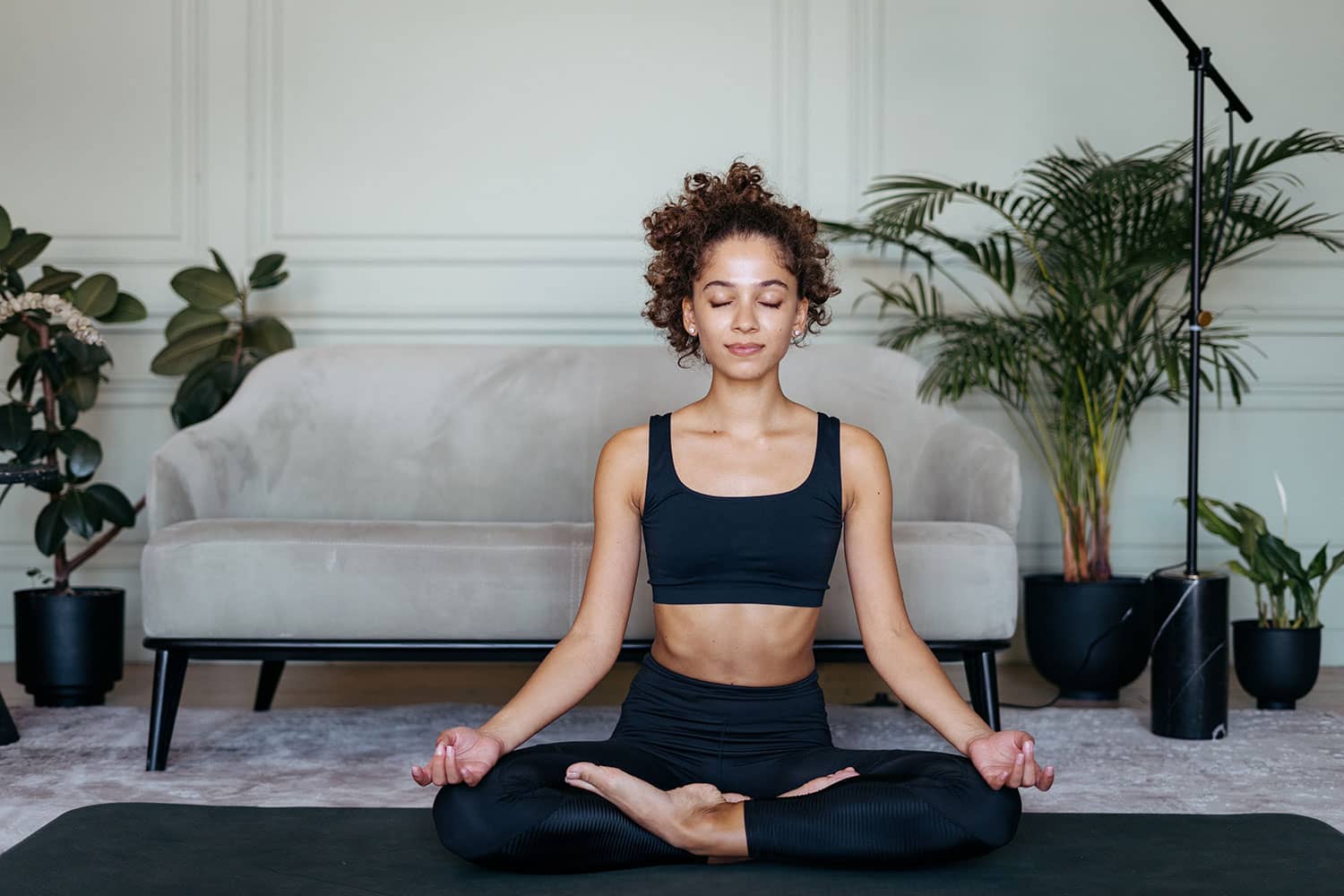
Former nutrition specialist Alexandra Mackenzie knows what it means to…
Find yourself stuck at home more these days? Why not take this time to create a meditation space in your home! The best way to cultivate a strong meditation practice is to take time to be still every single day. Fortunately, you can create a meditation space anywhere whether you live in a studio apartment or a large house.
Why Meditation?
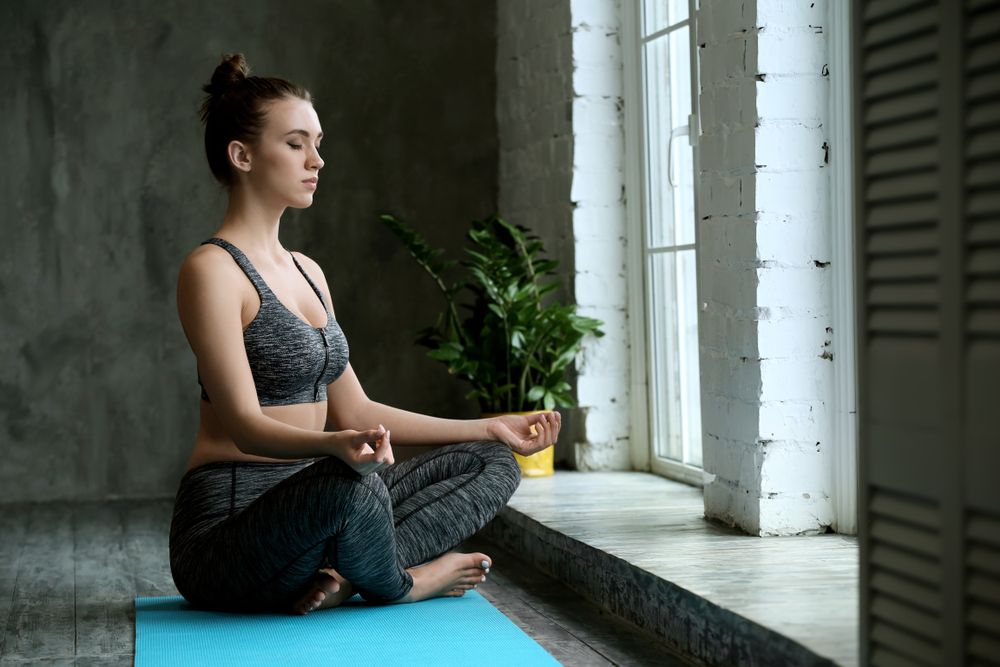
Meditation sounds great in theory but for many, it brings about doubt and skepticism. Many people believe that their mind is too active to take up a meditation practice. Believe it or not, the meditation practice is perfect for people who have minds that can’t shut off.
Meditation is a huge stress reliever and it also comes with a plethora of health benefits. Many things we do to stay healthy are expensive. Think how much you spend each year on memberships to a gym or fitness studio. Think about the cost of all the healthy foods you like to eat. The best part about meditation? It is free and can be done anytime, anywhere.
History of Meditation
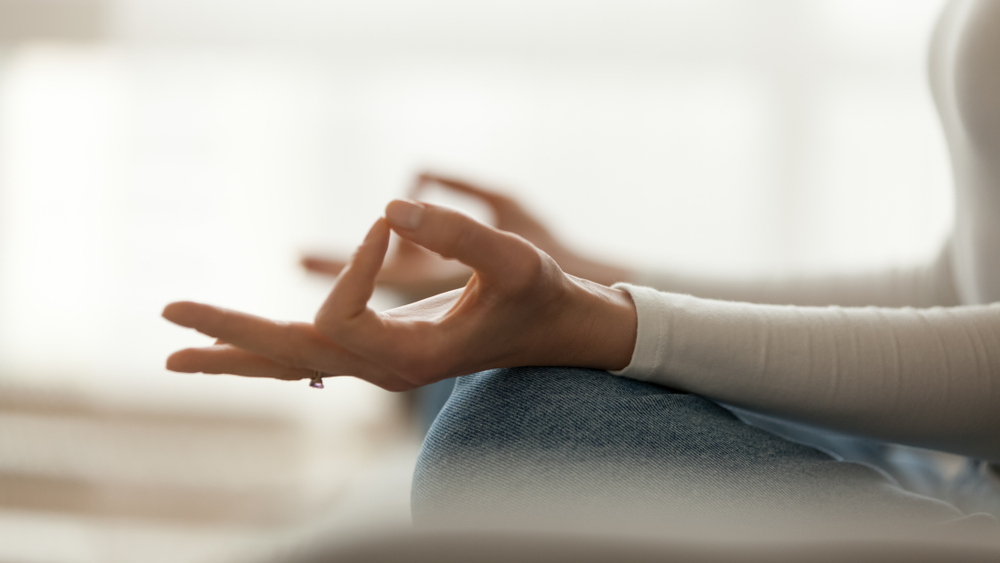
Meditation has an extensive history that goes back to ancient times. According to PositivePsychology, the oldest written records about meditation are from 1500 BCE in India. These written records found in the Vedas teach the practice of dhyana, a way to train the mind. Dhyana is also one of the 8-limbs of yoga created by Patanjali.PositivePsychology also notes that early forms of meditation were found in Buddhist India and Taoist China.
Meditation started to move west in the 1700s. This is when ancient texts were translated into English and other European languages. In 1893, a Hindu monk named Swami Vivekananda spoke at the Parliament of Religions in Chicago. His speech and insight had a lasting effect on western culture. He helped shed light on eastern ideas and philosophies like meditation and yoga.
While meditation originated in the world of eastern religion, today it is practiced all around the world across many cultures. Some use it as a spiritual practice while others use it to relax and de-stress. The practice of meditation is recommended by many professionals such as therapists and doctors. It can help relieve many physical and mental ailments.
Health Benefits of Meditation
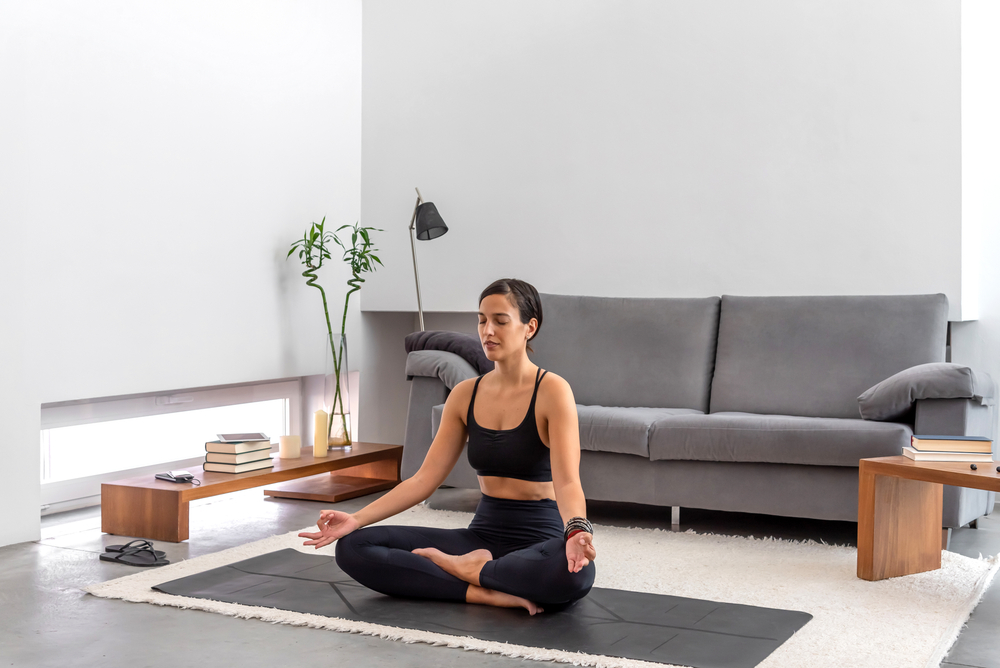
In today’s world, meditation is not just reserved for yoga class. Doctors frequently recommend meditation to their patients. Many scientific studies show that meditation can help patients manage a wide range of symptoms.
Mayo Clinic notes that meditation can help with conditions such as cancer, chronic pain, heart disease, irritable bowel, anxiety, depression, and more! Mayo Clinic states that “meditation isn’t a replacement for traditional medical treatment. But it may be a useful addition to your other treatment”.
If you have health issues and are interested in trying meditation, talk to a doctor or a psychologist about the best ways to implement meditation into your treatment plan.
Meditation and the Brain
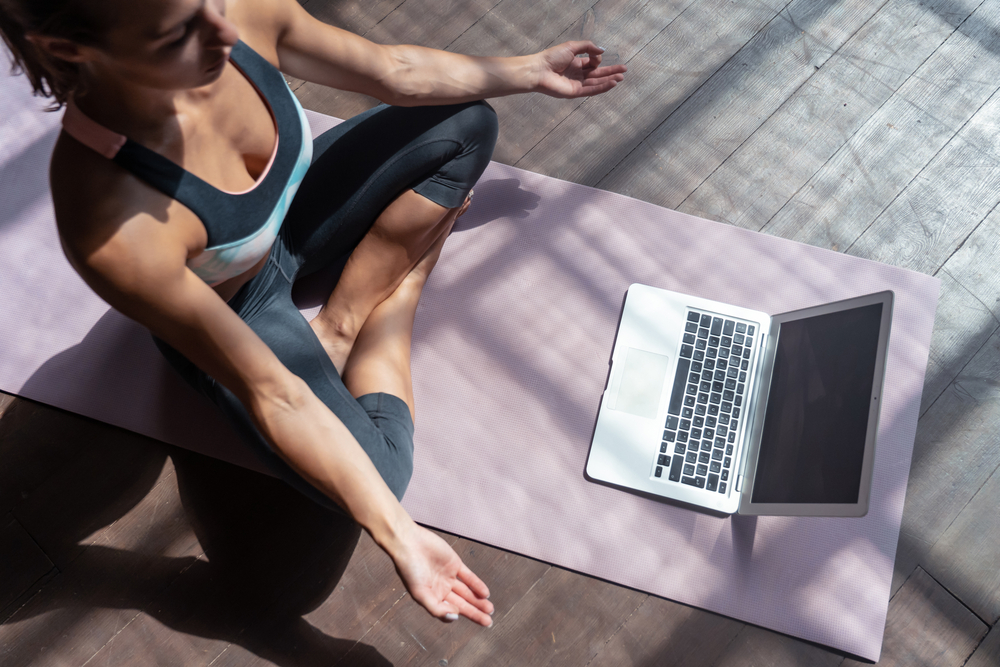
Gaelle Desbordes, a researcher at Harvard, performs MRIs on subjects when they are meditating and when they are not meditating. She found that during meditation, subjects had less activation in the amygdala part of the brain. This is the area of the brain that is in charge of emotional responses including fear and anxiety.
In her studies, Desbordes found that subjects not only had the physical brain changes during meditation but that these changes held steady even when they were not meditating. This means that meditation can have a positive influence on your emotional state far beyond those moments where you are sitting with your eyes closed.
Another interesting study out of Harvard further describes how meditation can change the brain. Forbes describes research done by Sara Lazar. Sara and her team studied subjects during and after 8 weeks of Mindfulness-Based Stress Reduction. They found the following structural changes in the brain:
- Increased cortical thickness in the hippocampus. This is the area of the brain that controls learning and memory.
- Increased cortical thickness in areas of the brain that help control emotion regulation and self-referential processing.
- Decrease in brain cell volume of the amygdala. This is the area of the brain that controls fear, anxiety, and stress responses.
These brain changes corresponded to the reports of psychological well-being from the subjects.
As seen by these studies, meditation is far from an esoteric practice. It is a practice that alters the structure of the brain. It can lead to reductions in anxiety, depression, and improvements in a variety of health conditions.
Meditation and Relaxation
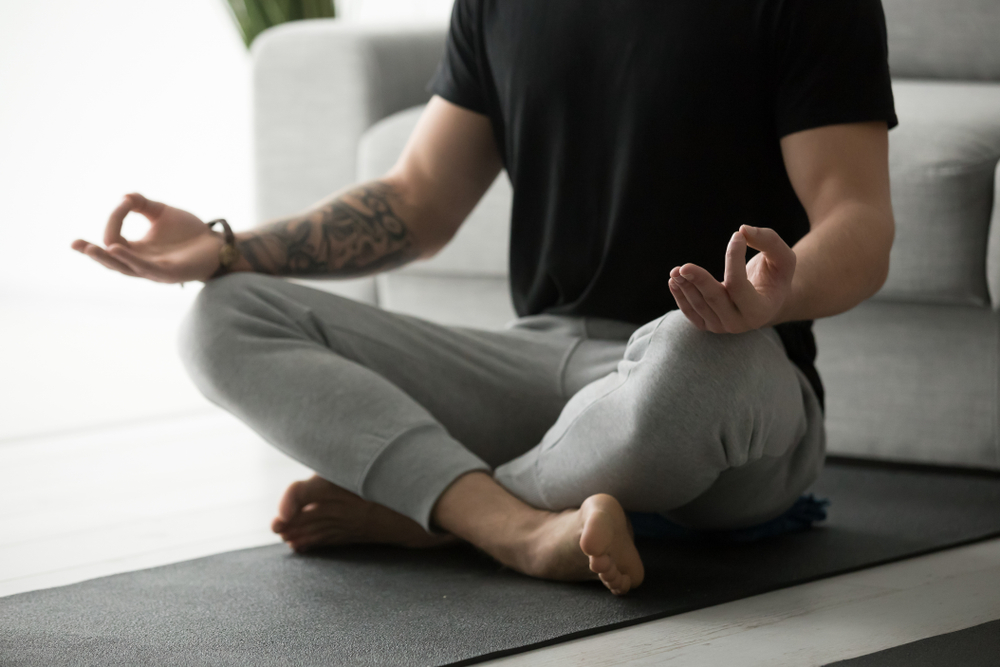
According to Headspace, when we are stressed, our body releases hormones. The hormones trigger a “fight or flight” response. The response causes the body to increase the heart rate, tense the muscles, decrease digestion, and quicken breathing. These processes prepare our body to respond to danger.
These physiological responses were helpful thousands of years ago when threats included things like being chased and killed by wild animals. Today, we typically don’t experience such dire circumstances.
The problem is, our body still reacts the same way. Nervous about a test? Dreading a family reunion? Anxious about flying on an airplane? None of these situations pose a direct threat to your life. Unfortunately, in many people, they cause a “fight or flight” reaction. In today’s world, many people feel as if they are in a constant state of “fight or flight” even though no real dangers exist.
Living in this state of “fight or flight” can cause issues like chronic stress and anxiety. Fortunately, there are things we can do to reduce the surge of hormones and find a state of relaxation.
Meditation is one practice that can help you reach that feeling of relaxation. By slowing down your breath and focusing your concentration, you can start to bring your body out of that “fight or flight” response. You can cultivate a space of peace and relaxation.
One great thing about meditation is that it doesn’t take long to start feeling the effects. In 2018, Headspace (a guided meditation app) performed a study on people using their app. The results of their study showed that after just 10 days of using the app, people reported an 11% decrease in stress. After 30 days of using the app, they reported a 32% decrease in stress.
How to Meditate
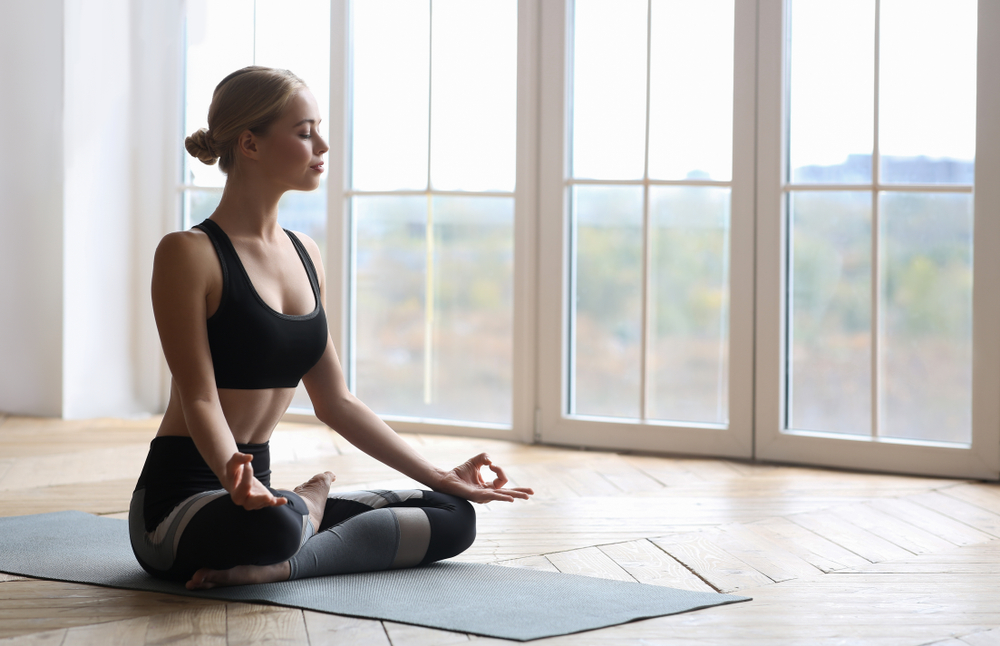
There are many different forms of meditation. The best way to find one that resonates with you is to try a variety of methods until you find one that feels right. Check out some different meditation techniques:
- Guided Meditation: The practitioner is guided through meditation by the voice of a teacher or an app. This is a great method for beginners. Apps like Headspace and Calm are easy to use and a great way to get started.
- Transcendental Meditation®: Sit quietly twice a day for 20 minutes each. During this time, repeat a mantra in your head.
- Walking Meditation: Take a mindful walk where you get in tune with your senses. Notice what you hear, see, smell, and feel. Leave your phone behind to eliminate distractions.
- Body Scan: Mentally observe each part of your body, head to toe. Notice and identify sensations without judgment.
- Mindfulness Meditation: Sit quietly with your eyes closed. Observe the present moment. Let your thoughts come and go without judgment or labeling
Now that you have learned the benefits of meditation, it is time to learn how to create a meditation space in your home.
What You Will Need to Create Your Own Meditation Space
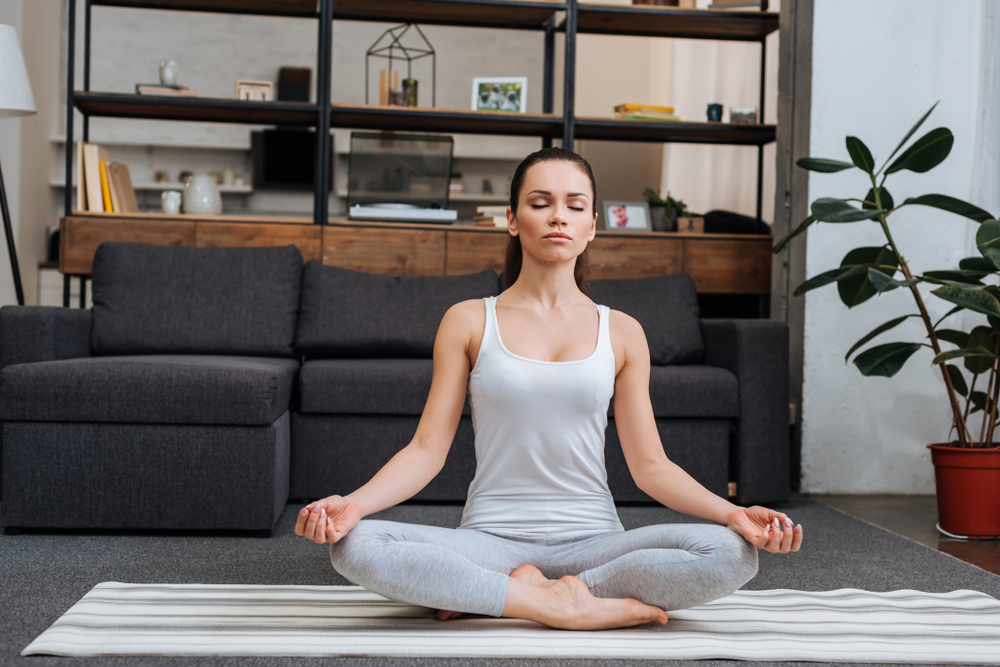
- Quiet spot
- Pillow or bolster
- Blanket
- Candles
- Essential oils or Palo Santo
- Headphones (if using a guided meditation app)
- Journal
- Comfy clothes
- Timer
Step-by-Step Instructions to Creating Your Own Meditation Space:
Seek out a quiet spot in your home.
Try to find a spot that you can dedicate to your meditation practice. This will make it a lot easier to avoid multitasking when trying to meditate.
Collect Your Props
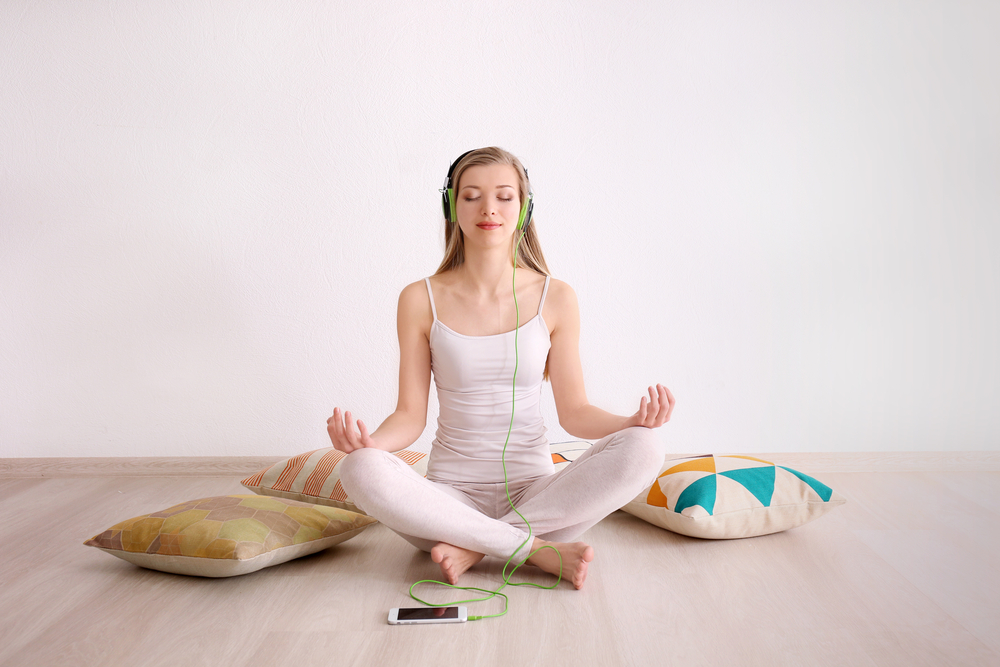
- Pillow or bolster
Sitting up on a pillow or bolster will make you comfortable for the meditation practice. It is important to be comfortable during meditation. Pain and discomfort are distracting to the practice. Place the pillow or bolster against a wall so that you have back support. You can even invest in an adjustable meditation chair for back support.
- Blanket
During meditation, you will want to stay warm. Drape a blanket over your body before beginning meditation to get nice and cozy!
- Candles
Lighting candles is a great way to ignite the senses and create a sense of relaxation.
- Essential Oils
If you are someone who enjoys using essential oils, rub them on your wrists before meditating. You can also put oils in a diffuser. Lavender is a great oil to promote relaxation.
- Palo Santo
Get a real yoga studio vibe by burning some Palo Santo before beginning your practice.
- Headphones
If you plan to use a meditation app, make sure you have headphones available in your meditation space.
- Journal
Reflection is an important part of the meditation practice. Post-meditation, have a journal nearby to write down any thoughts or breakthroughs.
- Comfy Clothes
It is critical that you are comfortable during meditation. Have comfy clothes available in your space. This can include sweatshirts, scarves, and fuzzy socks.
- Timer
If you are someone who likes to meditate for a specific amount of time each day, have a timer close by so that you know when your practice is over.
Now That Your Space is Ready…. Sit Quietly and Meditate!
Try to develop a consistent practice where you come to your space each day to meditate. It can be helpful to have a set time of day where you meditate as that can help you become more consistent. Some enjoy meditating first thing in the morning, while others enjoy stillness at other points during the day.
Keep Your Space Clean
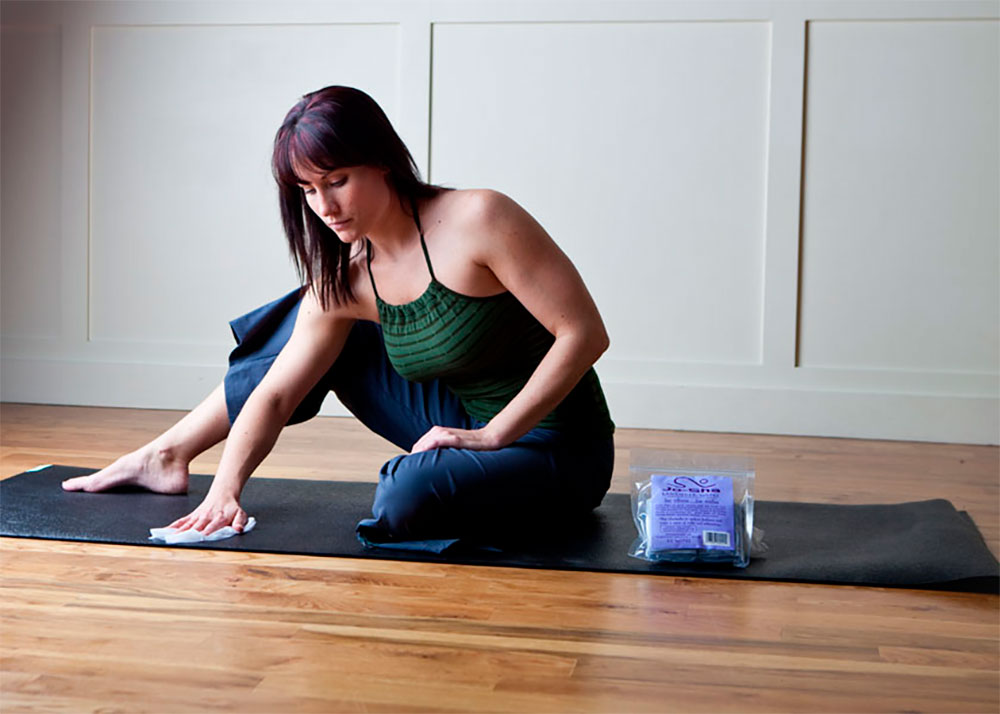
Meditation is a way to declutter our minds. It is important to make sure that your meditation space stays clean and decluttered as a messy space can be a big distraction. Take time every week to clean your space and keep it organized.
Journal
If journaling is an activity that resonates with you, try to do some writing after each meditation session. Note any thoughts or feelings that came up (positive or negative). Try to avoid being judgmental or labeling these thoughts, the idea is just to get them down on paper. As you continue on your meditation journey, it can be very helpful to look back on your daily reflections.
Tips for Creating a Meditation Space When You Live in a Small Home
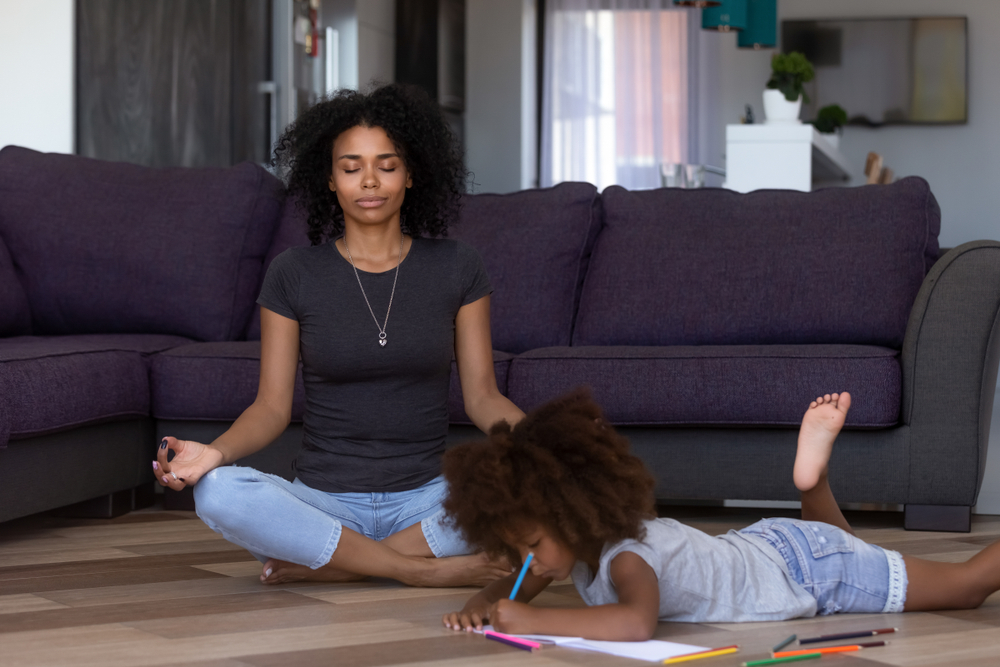
If you live in a small apartment there are still ways to create meditation spaces even if it can’t be a fully dedicated room. See if there is a corner somewhere in your home that can become a meditation space. Get a box to store all your props in so that they are compact and organized.
If you live with others in a small space, it can be hard to find a quiet time to meditate. Try setting your alarm 30 minutes before the rest of your family or roommates get up and use that silent time for your meditation practice. Remember, meditation can be done anytime, anywhere. You don’t need a big house with a dedicated meditation room to create a home practice.
Meditate from Home Today!
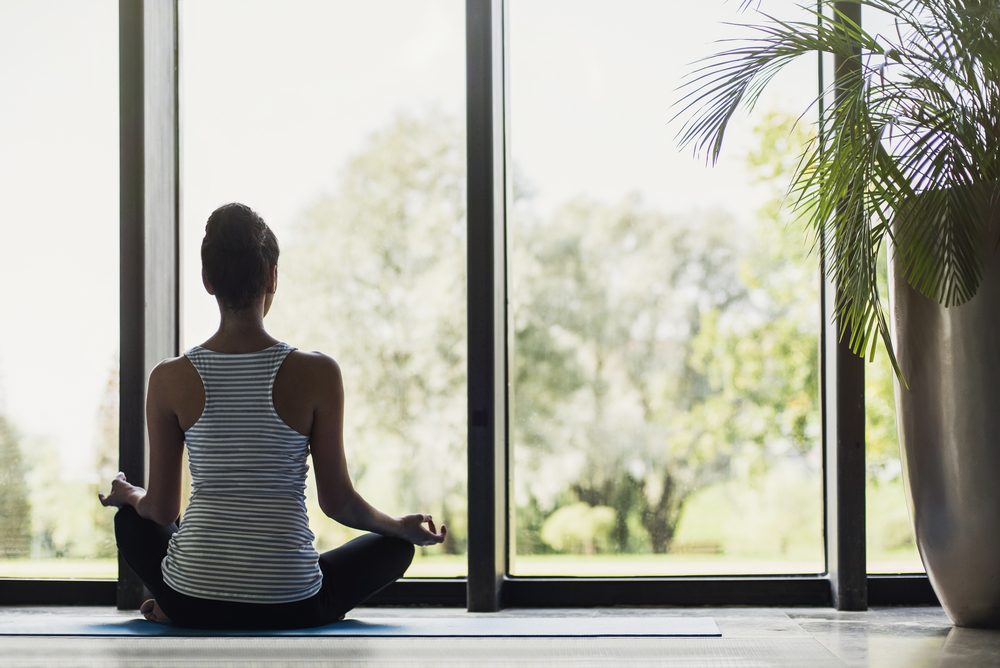
Meditation is a wonderful practice that has many health benefits and helps to reduce stress. Creating a space at home for meditation is a great way to begin a daily practice. This space should be quiet, relaxing, and a spot where you can truly escape into a space of ease and comfort. It doesn’t have to be big and it doesn’t have to be fancy. The goal is to create an area where you can fall into a meditative state of relaxation. What are you waiting for? Grab some props, find a space, and get started today!
What's Your Reaction?
Former nutrition specialist Alexandra Mackenzie knows what it means to support the body and mind through food. She’s passionate about sharing her wealth of knowledge with anyone willing to listen.






